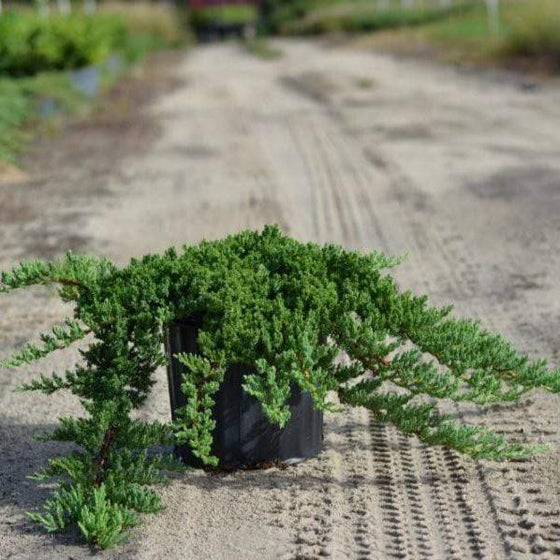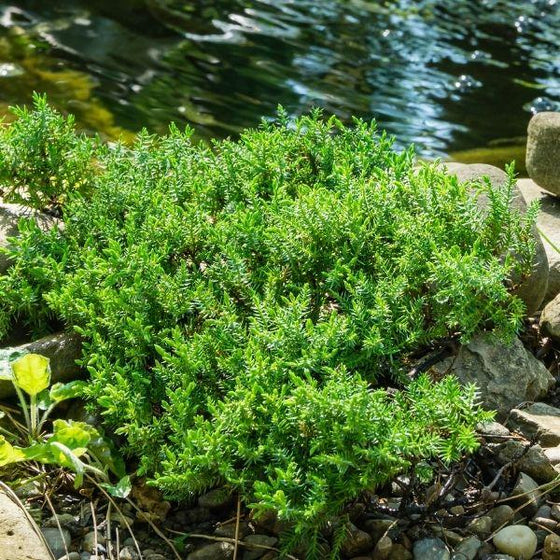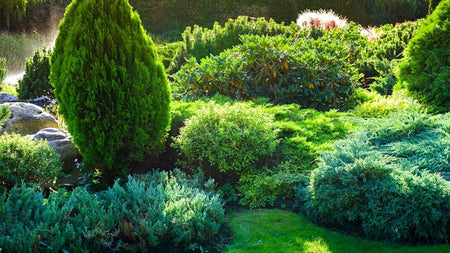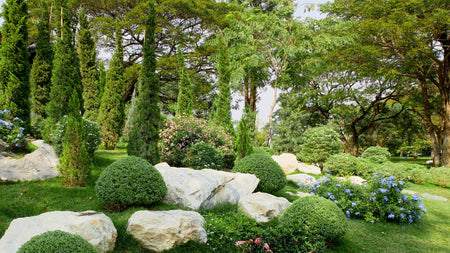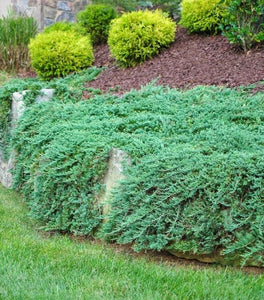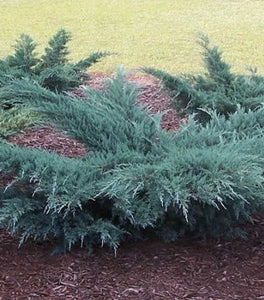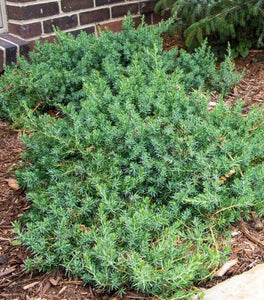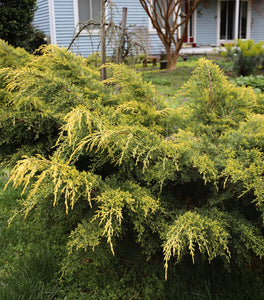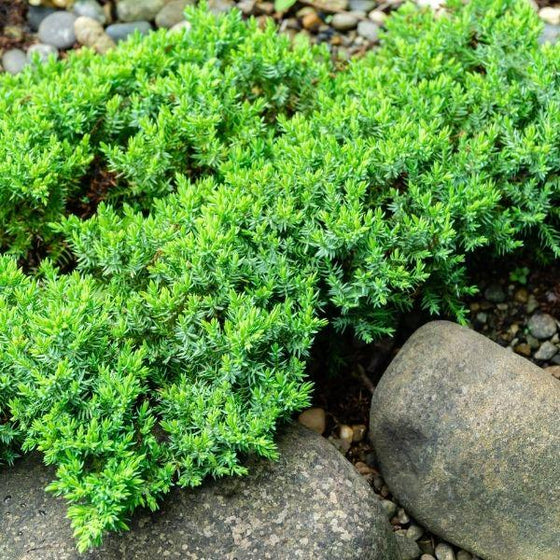
Images Depict Mature Plants
A Low-Growing Evergreen That Covers Ground with Effortless Style
Evergreen Groundcover with Year-Round Appeal
Juniperus procumbens ‘Green Mound’, also known as Green Mound Juniper, is a low-growing, spreading evergreen prized for its lush, dense texture and reliability. Its rich green foliage forms a soft carpet that hugs the ground, providing color and structure through every season. This compact, low-maintenance juniper brings form and function to slopes, rock gardens, or sunny borders with ease.
Compact Growth and Durable Design
Growing 1–2 feet tall and spreading 4–6 feet wide, Green Mound Juniper’s trailing branches create a uniform, mound-like mat that’s both beautiful and practical. Its fine-textured, needle-like foliage stays bright green year-round, turning slightly bronze in winter for added seasonal interest. It’s the perfect evergreen for low borders, retaining walls, or erosion-prone hillsides.
Thrives in Sun, Heat, and Drought
Once established, Green Mound Juniper tolerates heat, wind, drought, and even salt spray, making it an excellent choice for coastal gardens or difficult sunny sites. It prefers full sun and well-drained soil but thrives in poor, rocky, or sandy conditions. Truly one of the easiest evergreen groundcovers to grow, it’s virtually maintenance-free once established.
Functional and Beautiful in Every Setting
This versatile shrub provides more than just good looks — it’s a workhorse in the landscape. Use it to stabilize slopes, edge walkways, or spill over stone walls. Its neat, symmetrical growth and deep green color make it ideal for both modern landscapes and traditional garden designs.
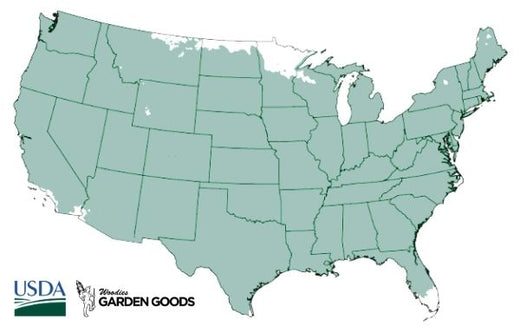
| Botanical Name | Juniperus procumbens ‘Green Mound’ |
|---|---|
| Hardiness Zone: | 4-9 |
| Mature Height: | 1 to 2 Feet |
| Mature Width: | 4 to 6 feet |
| Classification: | Evergreen groundcover shrub |
| Sunlight: | Full Sun |
| Soil Condition: | Well-drained, sandy or rocky soil |
| Water Requirements: | Low once established |
| Resistance | Deer-resistant, drought-tolerant, salt-tolerant |
| Landscape Uses | Groundcover, slopes, borders, erosion control, rock gardens |
How to Care for Green Mound Juniper
Be sure to read our planting instructions to ensure a healthy and happy Green Mound Juniper plant for years to come!
How should I plant Green Mound Juniper?
Choose a sunny location with well-drained soil. Dig a hole twice as wide as the root ball but no deeper, and loosen the surrounding soil. Set the plant so the top of the root ball is even with or slightly above the soil surface. Backfill gently, firming as you go to remove air pockets, and water deeply after planting. If planting multiple junipers, space them 4–6 feet apart to allow room for their spreading habit. Closer spacing will create faster ground coverage for erosion control or solid mats on slopes. Apply mulch around the base to retain moisture, but keep it clear of the trunk to prevent rot.
How often should I water Green Mound Juniper after planting?
Water thoroughly after planting and continue to water once or twice weekly during the first growing season. Once established, Green Mound Juniper becomes highly drought-tolerant and thrives with minimal care. During periods of extreme heat or drought, provide an occasional deep watering every 2–3 weeks to maintain vigor. Always allow the soil to dry slightly between waterings — junipers prefer well-drained conditions.
When should I fertilize Green Mound Juniper?
Feed Green Mound Juniper in early spring with a slow-release, balanced fertilizer like 10-10-10 to encourage new growth. Water after feeding to distribute nutrients evenly. In naturally rich or sandy soils, additional feeding is often unnecessary. Compost or organic mulch can also provide a gentle nutrient boost each spring.

When and how should I prune Green Mound Juniper?
Pruning is optional, as this variety naturally maintains a compact, tidy shape. If needed, trim lightly in early spring before new growth begins to remove dead or straggly branches. Avoid cutting back into old wood, as junipers do not regrow from bare stems. Occasional light shaping can help maintain dense, uniform coverage for borders or slopes.

